
Farley McGill Mowat, was a Canadian writer and environmentalist. His works were translated into 52 languages, and he sold more than 17 million books. He achieved fame with the publication of his books on the Canadian north, such as People of the Deer (1952) and Never Cry Wolf (1963). The latter, an account of his experiences with wolves in the Arctic, was made into a film of the same name released in 1983. For his body of work as a writer he won the annual Vicky Metcalf Award for Children's Literature in 1970.
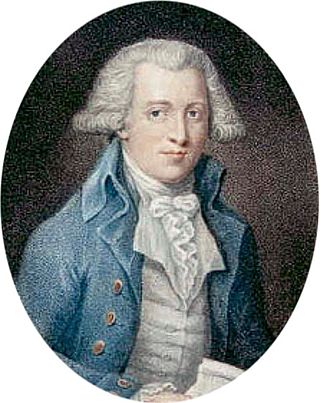
Samuel Hearne was an English explorer, fur-trader, author, and naturalist. He was the first European to make an overland excursion across northern Canada to the Arctic Ocean, specifically to Coronation Gulf, via the Coppermine River. In 1774, Hearne built Cumberland House for the Hudson's Bay Company, its second interior trading post after Henley House and the first permanent settlement in present Saskatchewan.
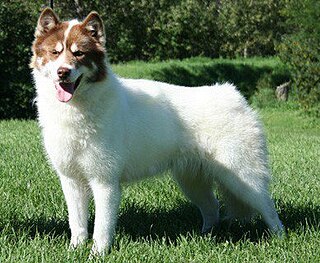
The Canadian Eskimo Dog or Canadian Inuit Dog is a breed of working dog from the Arctic. Other names include qimmiq or qimmit. The Greenland Dog is considered the same breed as the Canadian Eskimo Dog since they have not yet diverged enough genetically to be considered separate breeds, despite their geographic isolation.
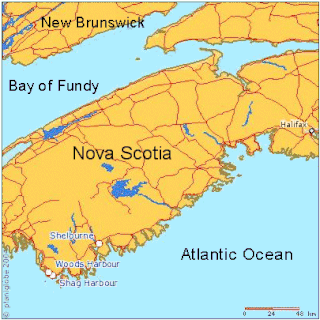
The Shag Harbour UFO incident was the reported impact of an unknown large object into waters near Shag Harbour, Nova Scotia, a tiny fishing village on the Atlantic coast, on 4 October 1967. The reports were investigated by various Canadian civilian and military agencies as well as the U.S. Condon Committee.

Phantoms is a horror novel by American writer Dean Koontz, first published in 1983. The story is a version of the now-debunked urban legend involving a village mysteriously vanishing at Angikuni Lake.
Indigenous police services in Canada are police forces under the control of a First Nation or Inuit government.
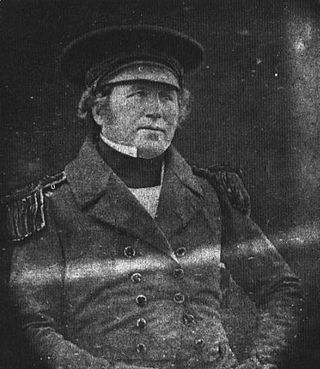
Francis Rawdon Moira Crozier was an Irish officer of the Royal Navy and polar explorer who participated in six expeditions to the Arctic and Antarctic. In May 1845, he was second-in-command to Sir John Franklin and captain of HMS Terror during the Franklin expedition to discover the Northwest Passage, which ended with the loss of all 129 crewmen in mysterious circumstances.

Whale Cove, is a hamlet located 74 km (46 mi) south southwest of Rankin Inlet, 145 km (90 mi) northeast of Arviat, in the Kivalliq Region, Nunavut, Canada, on the western shore of Hudson Bay.
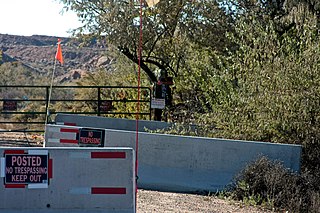
Skinwalker Ranch, also known as Sherman Ranch, is a property of approximately 512 acres (207 ha), located southeast of Ballard, Utah, that is reputed to be the site of paranormal and UFO-related activities. Its name is taken from the skin-walker of Navajo legend concerning vengeful shamans.

Ennadai Lake is a lake in the Kivalliq Region, Nunavut, Canada. It is 84 km (52 mi) long, and 4.8 to 22.5 km wide. It is drained to the north by the Kazan River. A 615 km (382 mi) section of the Kazan River from the outlet of Ennadai Lake to Baker Lake, was designated as a part of the Canadian Heritage Rivers System in 1990.

The Snow Walker is a 2003 Canadian survival drama film written and directed by Charles Martin Smith and starring Barry Pepper and Annabella Piugattuk. Based on the short story Walk Well, My Brother by Farley Mowat, the film is about a Canadian bush pilot whose life is changed through an encounter with a young Inuk woman and their challenge to survive the harsh conditions of the Northwest Territories following an aircraft crash. The film won six Leo Awards, including Best Lead Performance by a Male, and was nominated for nine Genie Awards, including Best Motion Picture, Best Performance by an Actor, Best Performance by an Actress, and Best Adapted Screenplay.
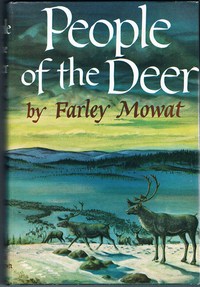
People of the Deer is Canadian author Farley Mowat's first book, and brought him literary recognition. The book is based upon a series of travels the author undertook in the Canadian barren lands, of the Keewatin Region, Northwest Territories (now the Kivalliq Region, Nunavut, west of Hudson Bay. The most important of these expeditions was in the winter of 1947–48. During his travels Mowat studied the lives of the Ihalmiut, a small population of Inuit, whose existence depended heavily on the large population of caribou in the region. Besides descriptions of nature and life in the Arctic, Mowat's book tells the sad story of how a once prosperous and widely dispersed people slowly dwindled to the brink of extinction due to unscrupulous economic interest and lack of understanding.
Below is a partial list of alleged sightings of unidentified flying objects or UFOs in Canada.
The Bloody Falls massacre was an incident believed to have taken place during Hudson's Bay Company employee Samuel Hearne's exploration of the Coppermine River for copper deposits near modern-day Kugluktuk, Nunavut, Canada on 17 July 1771. Hearne's original travelogue is now lost, and the narrative that became famous was published after Hearne's death with substantial editorializing. The narrative states that Chipewyan and "Copper Indian" Dene men led by Hearne's guide and companion Matonabbee attacked a group of Copper Inuit camped by rapids approximately 15 km (9.3 mi) upstream from the mouth of the Coppermine River.
The Ahiarmiut ᐃᓴᓪᒥᐅᑦ [ihalmiˈut] or Ihalmiut or are a group of inland Inuit who lived along the banks of the Kazan River, Ennadai Lake, and Little Dubawnt Lake, as well as north of Thlewiaza River, in northern Canada's Keewatin Region of the Northwest Territories, now the Kivalliq Region of present-day Nunavut.
Kikkik was an Inuit woman who in 1958 was charged with, but acquitted of, murder, child neglect and causing the death of one of her children. Her story was told by Farley Mowat.

Caribou Inuit, barren-ground caribou hunters, are Inuit who live west of Hudson Bay in Kivalliq Region, Nunavut, between 61° and 65° N and 90° and 102° W in Northern Canada. They were originally named "Caribou Eskimo" by the Danish Fifth Thule Expedition of 1921–1924 led by Knud Rasmussen. Caribou Inuit are the southernmost subgroup of the Central Inuit.

Franklin's lost expedition was a failed British voyage of Arctic exploration led by Captain Sir John Franklin that departed England in 1845 aboard two ships, HMS Erebus and HMS Terror, and was assigned to traverse the last unnavigated sections of the Northwest Passage in the Canadian Arctic and to record magnetic data to help determine whether a better understanding could aid navigation. The expedition met with disaster after both ships and their crews, a total of 129 officers and men, became icebound in Victoria Strait near King William Island in what is today the Canadian territory of Nunavut. After being icebound for more than a year Erebus and Terror were abandoned in April 1848, by which point Franklin and nearly two dozen others had died. The survivors, now led by Franklin's second-in-command, Francis Crozier, and Erebus's captain, James Fitzjames, set out for the Canadian mainland and disappeared, presumably having perished.

Copper Inuit, also known as Inuinnait and Kitlinermiut, are a Canadian Inuit group who live north of the tree line, in what is now the Kitikmeot Region of Nunavut and in the Inuvialuit Settlement Region in the Inuvik Region of the Northwest Territories. Most of them historically lived in the area around Coronation Gulf, on Victoria Island, and southern Banks Island.
David Charles Woodman is a Canadian mariner, author, and arctic researcher. He is known for his research on Franklin's Lost Expedition, having led or participated in nine expeditions to King William Island between 1992 and 2004, searching for relics, records, and the wrecks of the ships HMS Terror and HMS Erebus, and establishing the important role of Inuit oral testimony in the search.
















